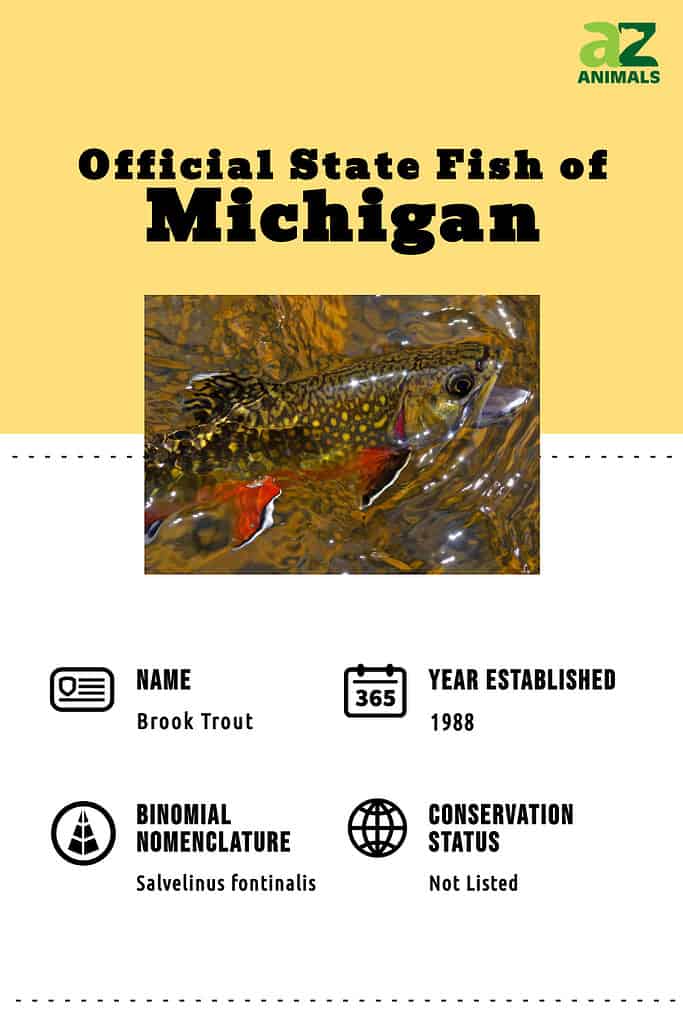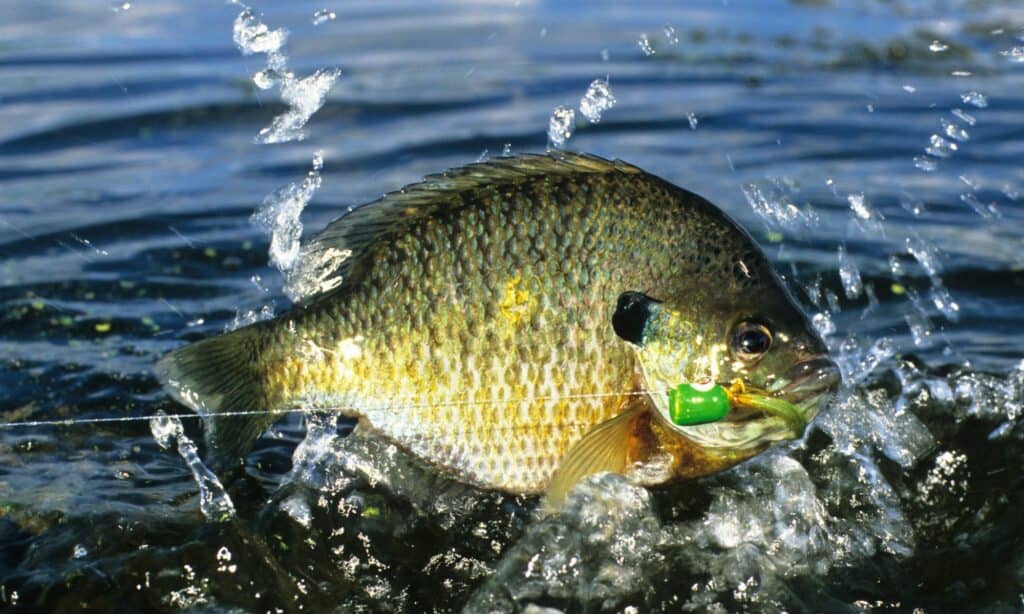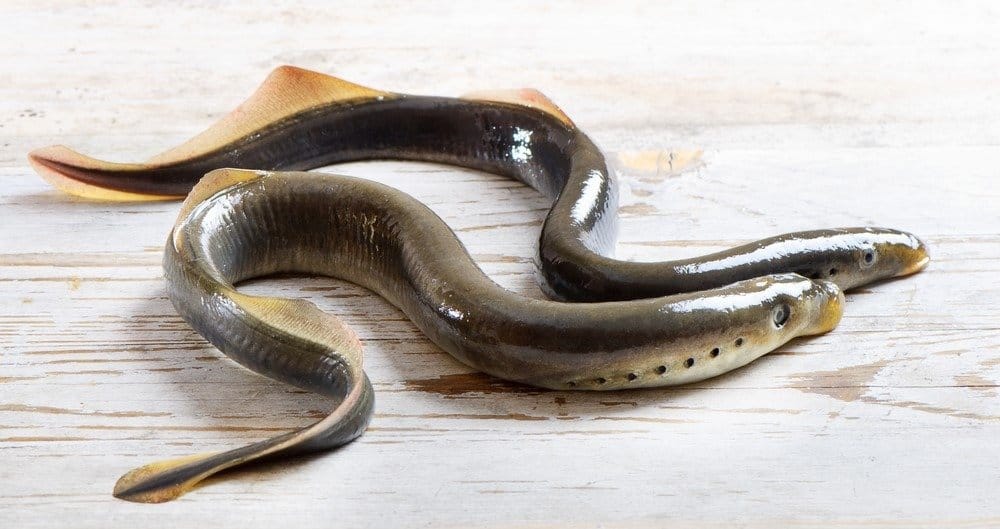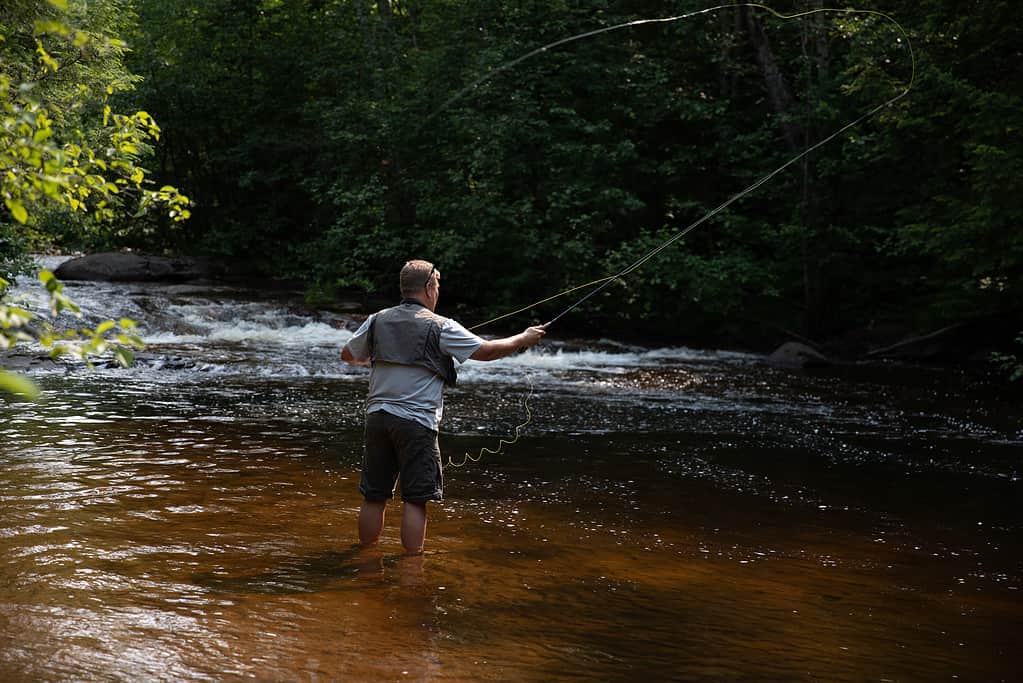The trout was designated as the state fish of Michigan in 1965, but a specific trout species was not named. There are five trout species native to Michigan: the brook trout, brown trout, lake trout, rainbow trout, and steelhead trout. (Technically, the lake trout isn’t a true trout but a freshwater char.) In 1988, state legislators amended the 1965 law to include the specific trout species. Thanks to that clarification, we now know the official Michigan state fish is the brook trout.

Selecting Michigan’s State Fish
As Michigan legislators considered options for the official state fish in the mid-1960s, the bluegill was an early candidate in the House of Representatives. Rep. Charles J. Davis (R-Onondaga) sponsored what came to be known as “The Bluegill Bill.”
The trout was the fish favored by the Senate. Ironically, the Senate bill was sponsored by Sen. Terry L. Troutt (D-Romulus).
As state lawmakers debated which fish should receive the official designation, Lyall Smith wrote an entertaining satirical piece in the Detroit Free Press entitled “If We Must Have a State Fish.” In the article, Smith argued that the state fish should be “the one that got away” since this is the fish every angler in Michigan knows better than any other.
Smith’s humorous proposal aside, Michigan lawmakers debated the options for months. The Senate unanimously approved Sen. Troutt’s bill to name the trout as Michigan’s state fish. The trout eventually won out over the bluegill in the House, as well, with a 69-26 vote.

The bluegill had a number of supporters as the best candidate to become Michigan’s state fish.
©iStock.com/stammphoto
The Debate Continued
Bluegill supporters didn’t give up easily, though. After the trout was approved by the House, Rep. Homer Arnett (R-Kalamazoo) immediately proposed an amendment that would strike “trout” and replace it with “bluegill” in the legislation. Arnett was quoted in the Lansing State Journal, saying, “This is the little fish that everyone knows and catches with very little effort… There are all kinds of trout — rainbow trout, speckled trout, brown trout, and now Senator Troutt. It takes a lot of fancy equipment and a special license to catch them.”
Rep. Donald E. Holbrook, Jr. (R-Clare) agreed, saying, “The first fish I ever caught was a bluegill… I’ve yet to catch a trout.”
But Rep. Joseph M. Snyder (D-St. Clair Shores) pushed back against the assertions of his colleagues, saying, “If you have a state fish, it should be a game fish like the trout.”
In the end, a roll call vote of 52-39 ended all debate and Governor George Romney then signed the bill.
Through all the debates and procedures required to name a state fish, legislators neglected to name the specific trout species, as noted at the beginning. Governor Romney referred the issue to the State Conservation Department (which would later become the Michigan Department of Natural Resources). The department named the brook trout as the state fish. Still, it wouldn’t become official until 23 years later when Governor James J. Blanchard signed the legislation that answered the question once and for all: the brook trout is the official state fish of Michigan.
Brook Trout
The brook trout is also known as the speckled trout or simply as the “brookie.” Lesser used names include brook charr, squaretail, and mud trout.
This lovely fish features an olive-green back with yellow wormlike markings (vermiculations) along its back. The color transitions from olive-green to orange-red along the fish’s sides, with scattered bright red spots that are sometimes circled with a pale blue halo. The lower fins are red or orange, each with a white and a black streak.

The brook trout features lovely vermiculations on its olive-green back.
©M Rose/Shutterstock.com
Brook Trout in Atlantic coastal states travel into the ocean to feed, often for months at a time. While in the salty Atlantic waters, the fish lose their brilliant hues and turn a more dull silver color. When these “salters” return to freshwater, their vibrant colors also return.
Brook trout typically grow around 10-12 inches long and weigh 1-2 pounds. The Michigan state record brook trout weighed 9.5 pounds and measured 28.1 inches long. This record fish was caught in 1996 by an ice fisherman on Clear Lake in Houghton County in Michigan’s Upper Peninsula. The world record brook trout was caught in the Nipigon River in Ontario, Canada. That fish measured 31 inches long and weighed a whopping 14 pounds, 8 ounces.
Prey and Predators
The brook trout’s preferred prey targets include nymph and adult forms of aquatic insects such as mayflies, stoneflies, and caddisflies. This fish is an opportunist, though. It will feed on whatever prey presents itself, including (but not limited to) zooplankton, crustaceans, worms, terrestrial insects such as beetles and ants, amphibians, and smaller fish, including other brook trout. If a brook trout can fit an animal in its mouth, it is a potential prey target.
The brook trout is also an important prey species for predators such as northern water snakes, herons, kingfishers, otters, and snapping turtles.
The lamprey also preys on brook trout. This invasive species found its way into the Great Lakes in the 1830s via the Welland Canal. This primitive parasitic fish latches on to another fish with its disc-shaped, suction-cup mouth, ringed with sharp teeth. The lamprey uses its rough tongue to cut into the host fish’s flesh and then feeds on its blood and body fluids. One lamprey can kill up to 40 pounds of fish every year. Trout, such as brook trout, are prime targets for the invasive lamprey.

Lampreys are an invasive parasitic species in the Great Lakes that attach to native fish such as brook trout.
©Tatjana Baibakova/Shutterstock.com
Fishing for Michigan’s Brook Trout
Brook trout can be found throughout most of Michigan in creeks, streams, rivers, lakes, and in the Great Lakes.
They are often found under rocks, logs, and undercut banks. Larger brook trout often inhabit deep pools moving to shallow water only to feed.
Brookies can be caught on spinning tackle using various bait and lures, including worms, crickets, grasshoppers, spoons, and spinners. Fly fishing is often more effective, though. Brook trout can be caught on both wet and dry flies.

Anglers can catch brook trout in Michigan’s many miles of coldwater streams.
©Ryan Kashmark/Shutterstock.com
Michigan is home to over 20,000 miles of coldwater trout streams, with around 850 miles once classified as Blue Ribbon Trout Streams (Michigan no longer uses this official classification).
The small town of Kalkaska has been dubbed “Trout Town USA.” It is home to the annual National Trout Festival. The town also features the National Trout Memorial, commonly known as “The Fishermen’s Shrine.” It features an 18-foot statue of a brook trout in the middle of a fountain. The memorial was placed in front of the Kalkaska Historical Museum in 1966.
A Symbol of Clean Water
Brook trout are sometimes called mud trout, which is ironic since brook trout need exceptionally clean water to thrive. As such, brook trout have become a de facto symbol of clean water conservation.
These trout prefer water temperatures from 57–60°F. If water is warmed through pollution, brook trout will leave that waterway. The presence of brook trout is a sign that a water system is clean and clear.
The fish’s connection to clean water and its status as a prized game fish have earned the brook trout official recognition in multiple states. Along with Michigan, the brook trout is the official state fish in New Hampshire, New Jersey, New York, North Carolina, Pennsylvania, Vermont, Virginia, and West Virginia. It is also the state coldwater game fish in Georgia and the provincial fish of Nova Scotia, Canada.

Brook trout require clean, cold water to thrive.
©United States Fish and Wildlife Services / Public domain – License
The photo featured at the top of this post is © Matt Jeppson/Shutterstock.com
Thank you for reading! Have some feedback for us? Contact the AZ Animals editorial team.






